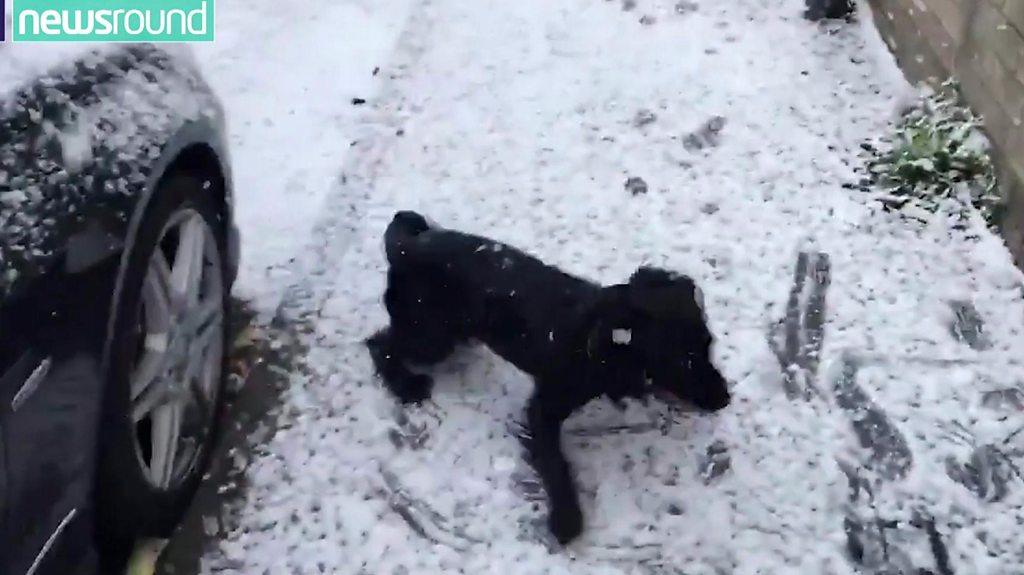Animals that love the snow
- Published
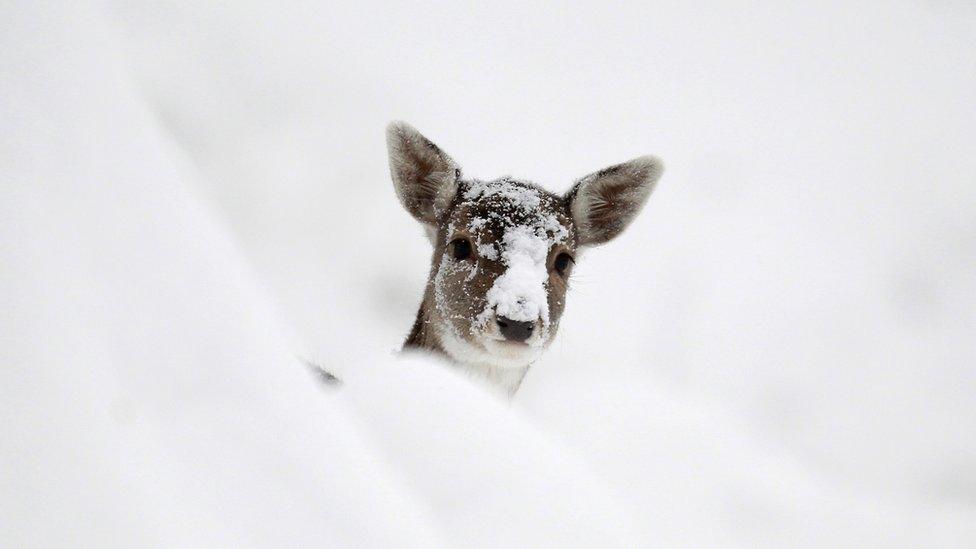
A deer plays in the snow in Knole Park in Kent. Knole park is famous for its wild deer that are allowed to roam over 1,000 acres!
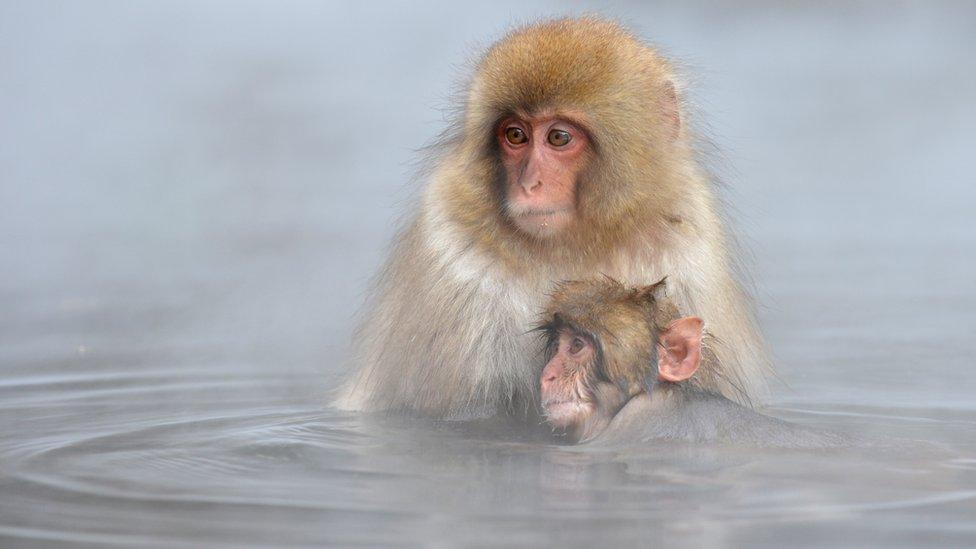
Japanese macaques - known as snow monkeys - bathe in hot springs to keep themselves warm during the winter. For fun, macaques sometimes like to have snowball fights! How cute is that?
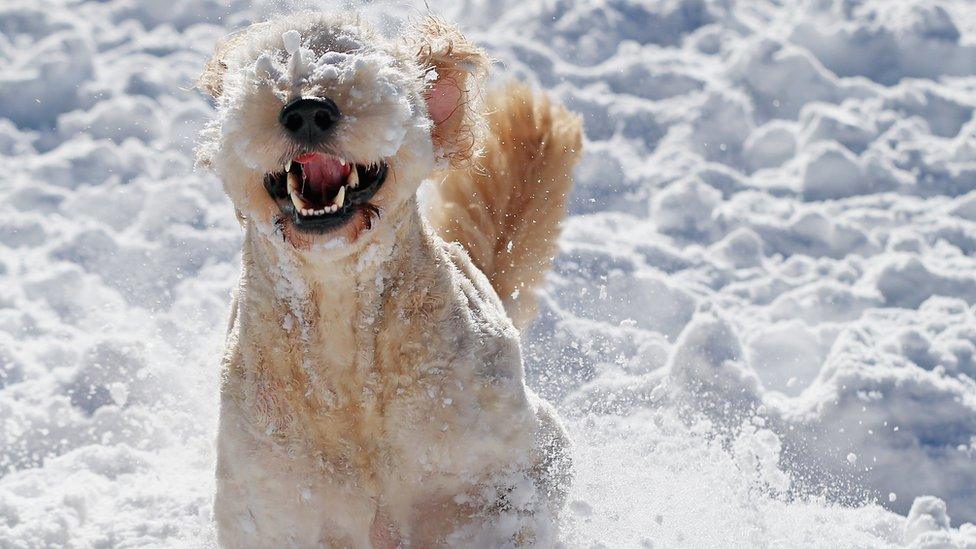
Have you ever seen a dog have more fun playing in the snow? This is Ziggy playing in the snow that was left by Storm Jonas in 2016 over New York. Looks like someone knows how to make the most of bad weather!
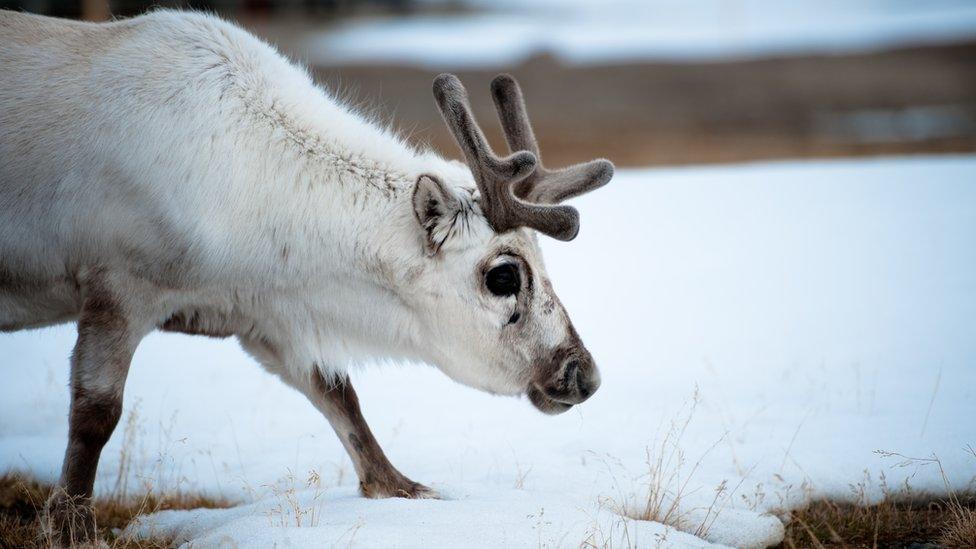
A reindeer calf explores the snow in Svalbard, part of a group of Norwegian islands close to the North Pole. Reindeer are able to cope so well in cold temperatures because of their very warm coats and large hooves.
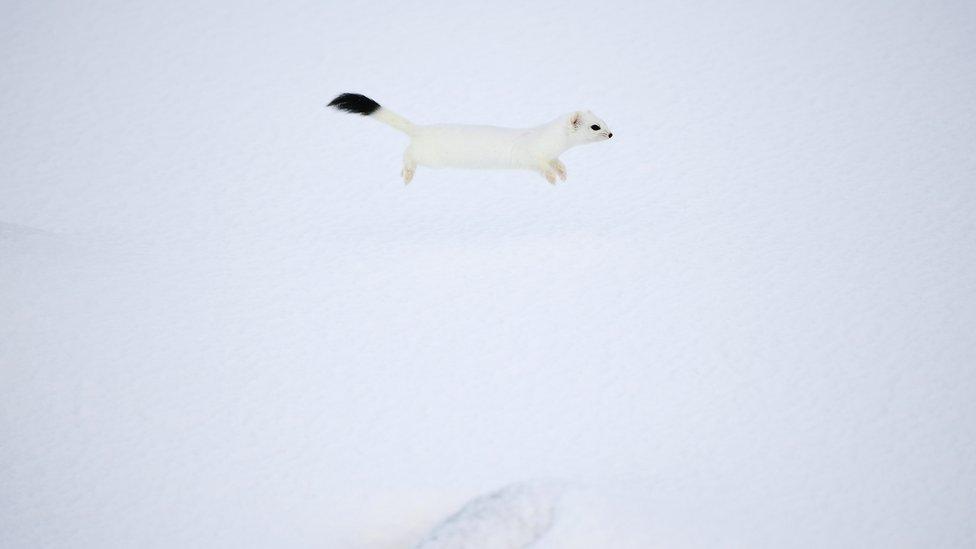
Is it a bird? Is it a plane? No! It's an arctic weasel! This weasel isn't flying - it just looks like it! He's playing on a snowy beach in the Arctic Circle. In the winter, the coats of ermine weasels change from warm brown to bright white. This helps them camouflage in the snow.
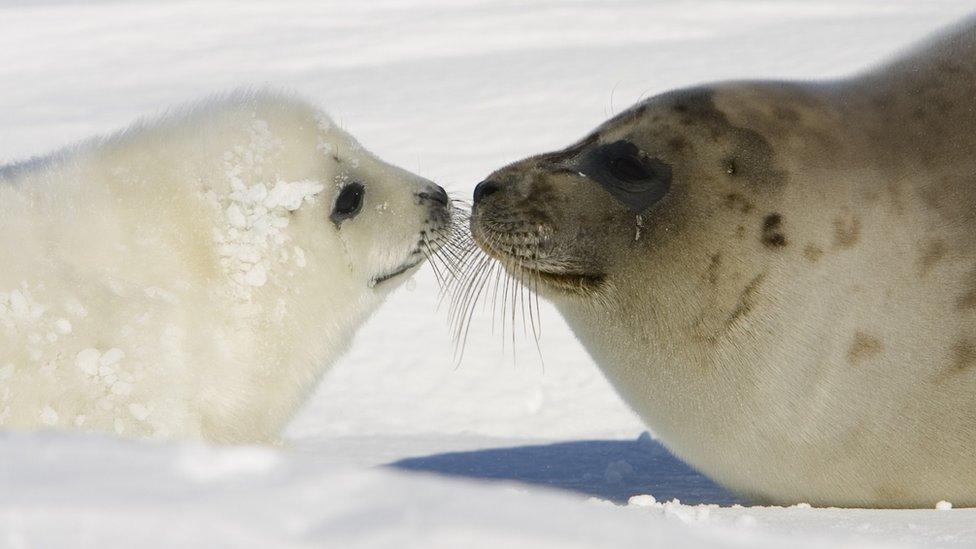
A harp seal and her pup float floating on ice off the coast of Quebec in Canada. Harp seals are excellent swimmers and can stay underwater for up to 15 minutes! Baby harp seals are born with fluffy white coats, which they shed after three weeks.
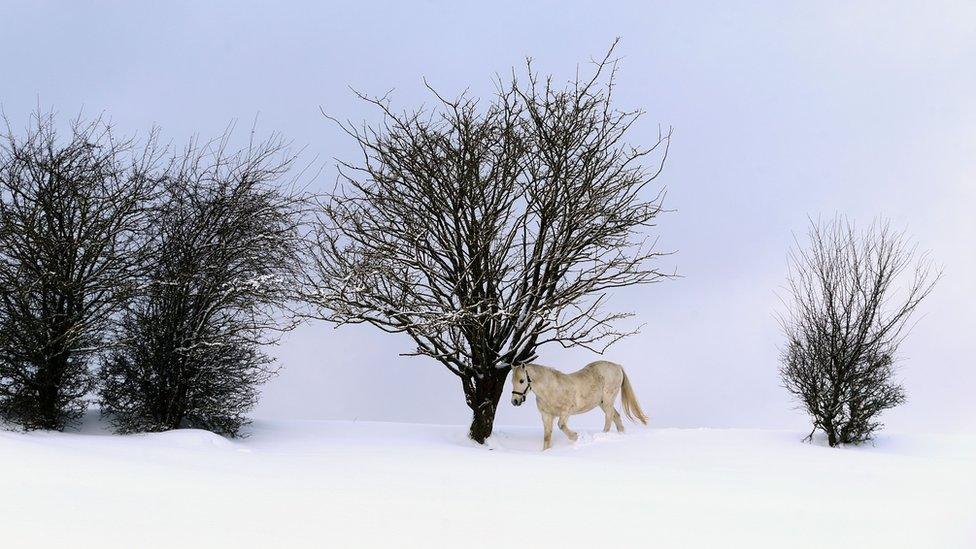
A horse walks through a paddock in south Germany. In the winter, horses are able to warm themselves up by digesting food. The colder the weather, the more food a horse will ingest to keep their body temperatures up. Hay is very high in fibre and can help keep a horse toasty warm!
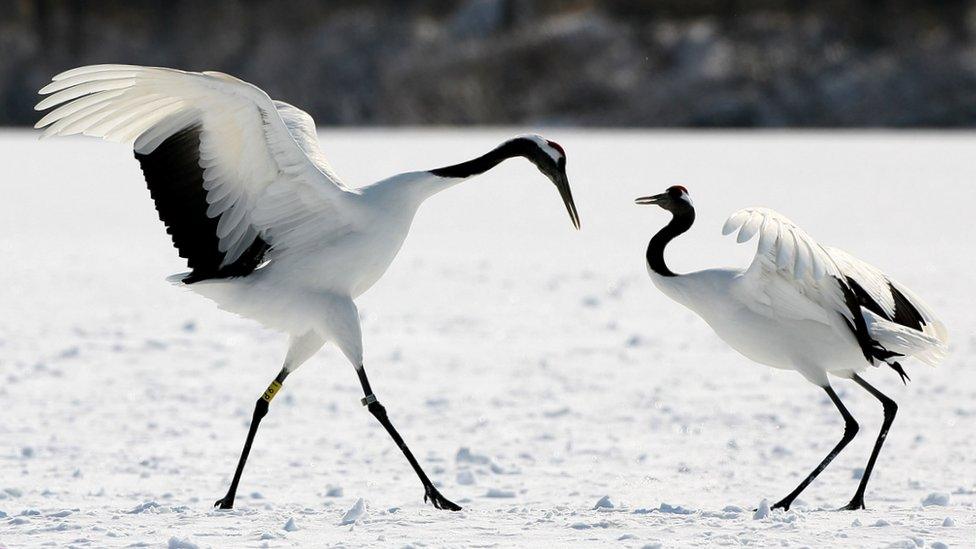
Red-crowned cranes dance in the snow near the village of Tsurui in Japan. They represent long life and good luck, and they feature a lot in traditional Japanese stories and art. Pairs of cranes often dance together to strengthen their bond to one another.
- Published5 February 2018
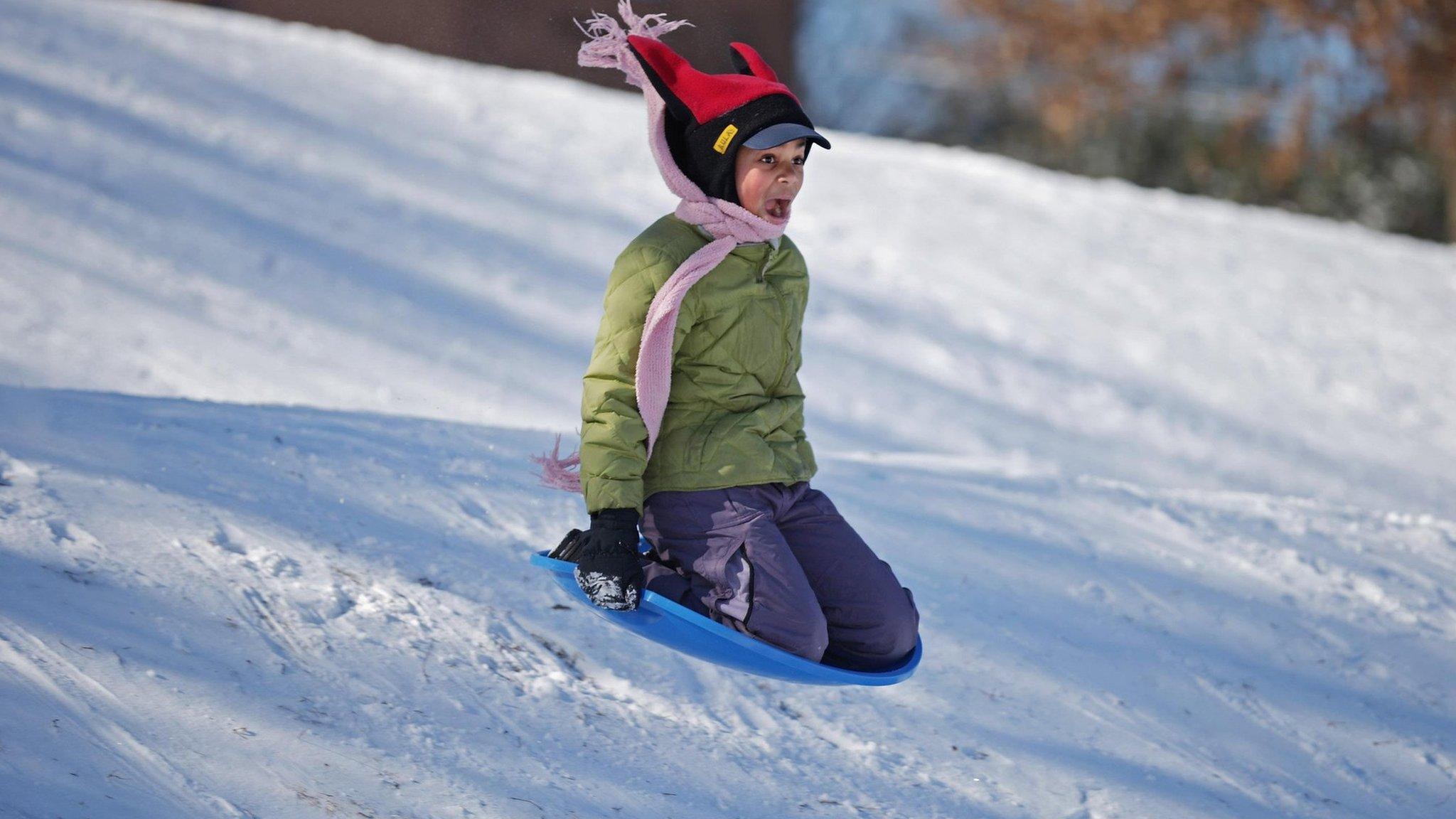
- Published9 December 2017
- Published30 November 2017
